VOSA binary fit. Quality assurance testing. July 2023
Aim
The aim of this document is to present the results obtained from the tests carried out to assess the performance of the binary fit functionality implemented in VOSA and the accuracy of the derived physical parameters, in particular effective temperatures.
Firstly, we evaluated the effective temperatures estimated by VOSA for different types of single stars (FGKM spectral types and white dwarfs) using different collections of theoretical models (BT-Settl, BT-Settl CIFIST and Koester). Once the reliability of the results obtained for single stars was confirmed we, then, use those theoretical models to fit two-body SEDs. It is very important to be aware of the limitations and caveats found in this assessment of the two-body SED fitting functionality of VOSA and do not blindly use it.
FGK Spectral types
Individual objects:
- We crossmatched the MILES library (985 objects) with Gaia DR3 using a 5arcsec search radius. Only the nearest counterpart is considered. After this, 783 objects were kept.
- We kept those MILES sources lying in the following ranges of values:
- 3800K < Teff < 7200K
- logg >=4
- -0.5 < [M/H] < 0.5
- Vmag > 6
- Having Gaia DR3 spectra
After the filtering we were left with 41 sources. These 41 sources are at less than 150pc, so the effect of extinction on the SED is negligible.
- We built the observational SED of these 41 sources with VOSA using the following photometric catalogues:
- We fit the observational SED to the BT-Settl collection of theoretical models in this range of physical parameters
- 3000K < Teff < 8000K
- 4.0 < logg < 4.5
- -0.5 < [M/H] < 0.5
- In the figure given below we see how VOSA temperatures are just slightly lower than those included in MILES.
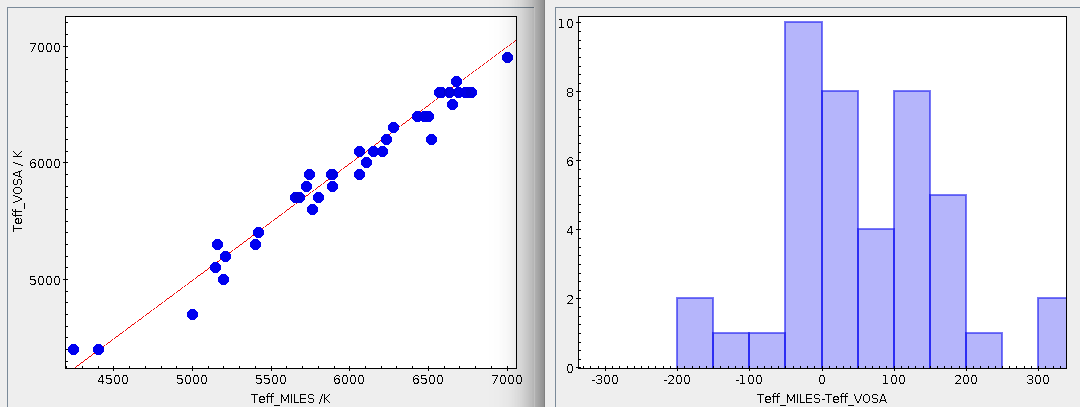
White dwarfs
Individual objects
- Our sample of white dwarfs was taken from the Montreal database fulfilling the following conditions:
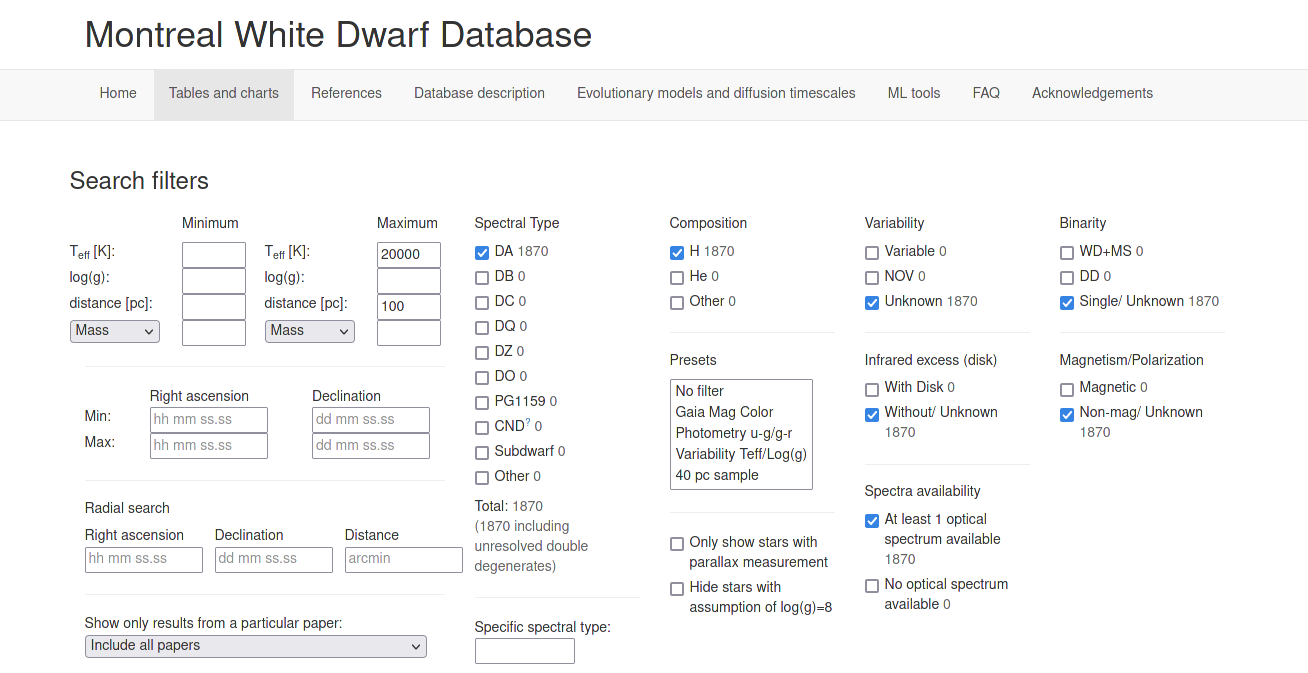
Out of those 1870 we randomly kept 85. As before, the observational SED was built using the GaiaDR3 syntphot, 2MASS, and WISE catalogues. The effective temperatures estimated using the Koester models showed very good agreement with those included in the Montreal database.
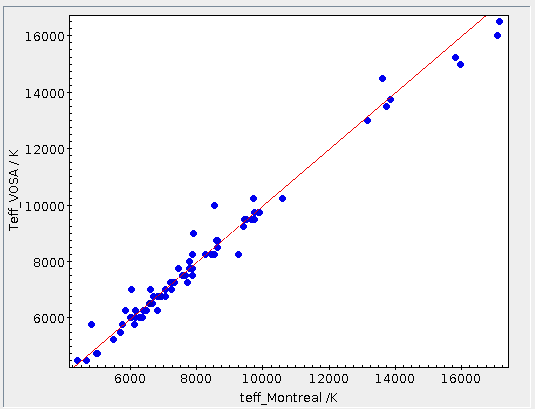
M stars
Individual objects
- We took the 254 low-mass dwarfs from López-Valdivia et al. 2019
- We kept those with spectral types equal or later than M0 and spectroscopic temperatures < 3900K --> 184 sources
- We kept those with counterparts in Gaia DR3 at less than 5arcsec --> 89 sources
- We kept those with good parallax determination (plx>0 & e_plx/plx<0.2) and at less that 150 pc to make extinction negligigle --> 69 sources
- We built the SED using the following catalogues available in VOSA: 2MASS, AKARI/IRC, AKARI/FIS, WISE, APASS, SDSS DR12. For SDSS only magnitudes fainter than the saturation limit (u:13mag; g:14mag; r:14mag; i:14mag; z: 12 mag) were considered.
- SEDs were fitted to the BTSettl-CIFIST models in the following range of parameters:
- 1200K < Teff < 7000K
- 3 < logg < 5.5
- [M/H]=0
- After a visual inspection we kept 42 sources. Effective temperatures estimated with VOSA are in good agreement although slightly lower than those included in López-Valdivia et al.
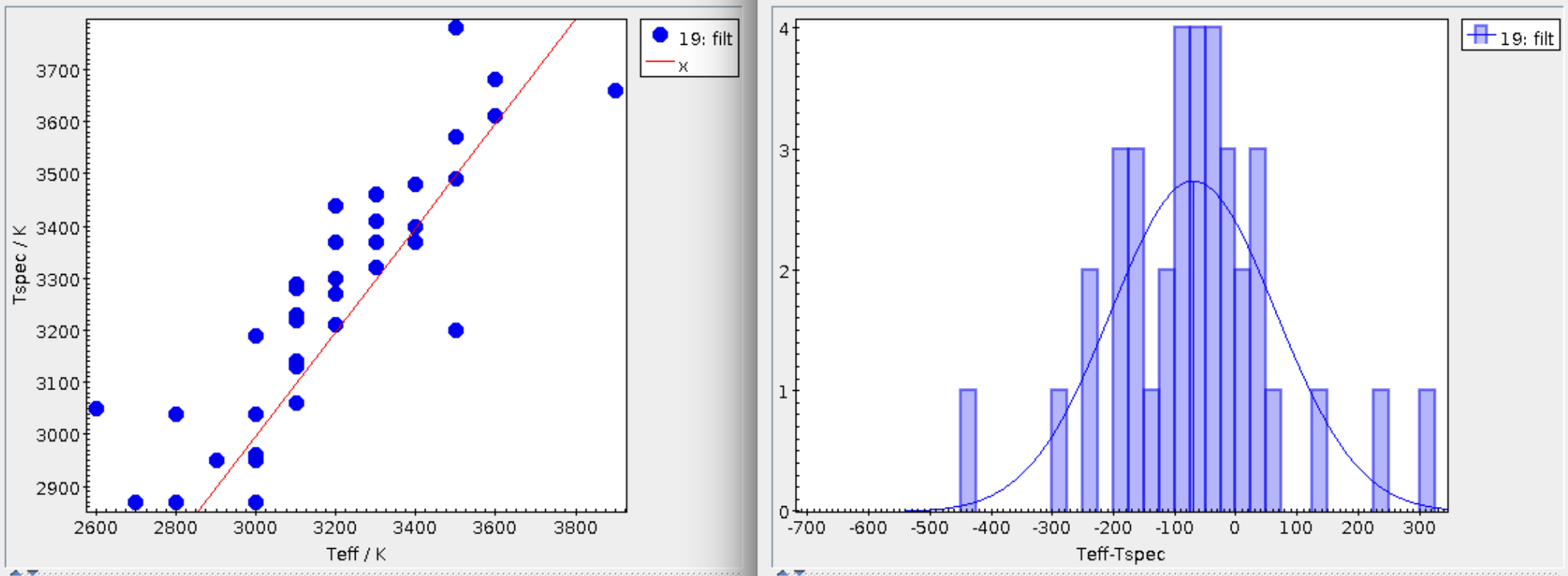
Binary fit use case #1
Hot white dwarf + FGK main sequence star (Parsons et al. 2016)
- We took the eight objects listed in Table 2 in the paper by Parsons et al. Their effective temperatures were derived from HST spectra (white dwarfs) and RAVE/LAMOST pipelines (FGK main sequence stars).
- We built their SEDs using the following catalogues available from VOSA:
- 2MASS, WISE, GaiaDR3-Synt.Phot (CDS), and GALEX-GR6+7
- If we fit the observational SEDs to the BT-Settl collection of models in the following range of parameters:
- 3000K < Teff < 8000K
- 3 <=logg <=4.5
- -0.5 < [M/H] < 0.5
we see how 7 out of 8 objects show a clear excess in the blue, at GALEX and U_Johnson/u_SDSS bands, which indicates the presence of a second, hotter companion (the white dwarf in our case).
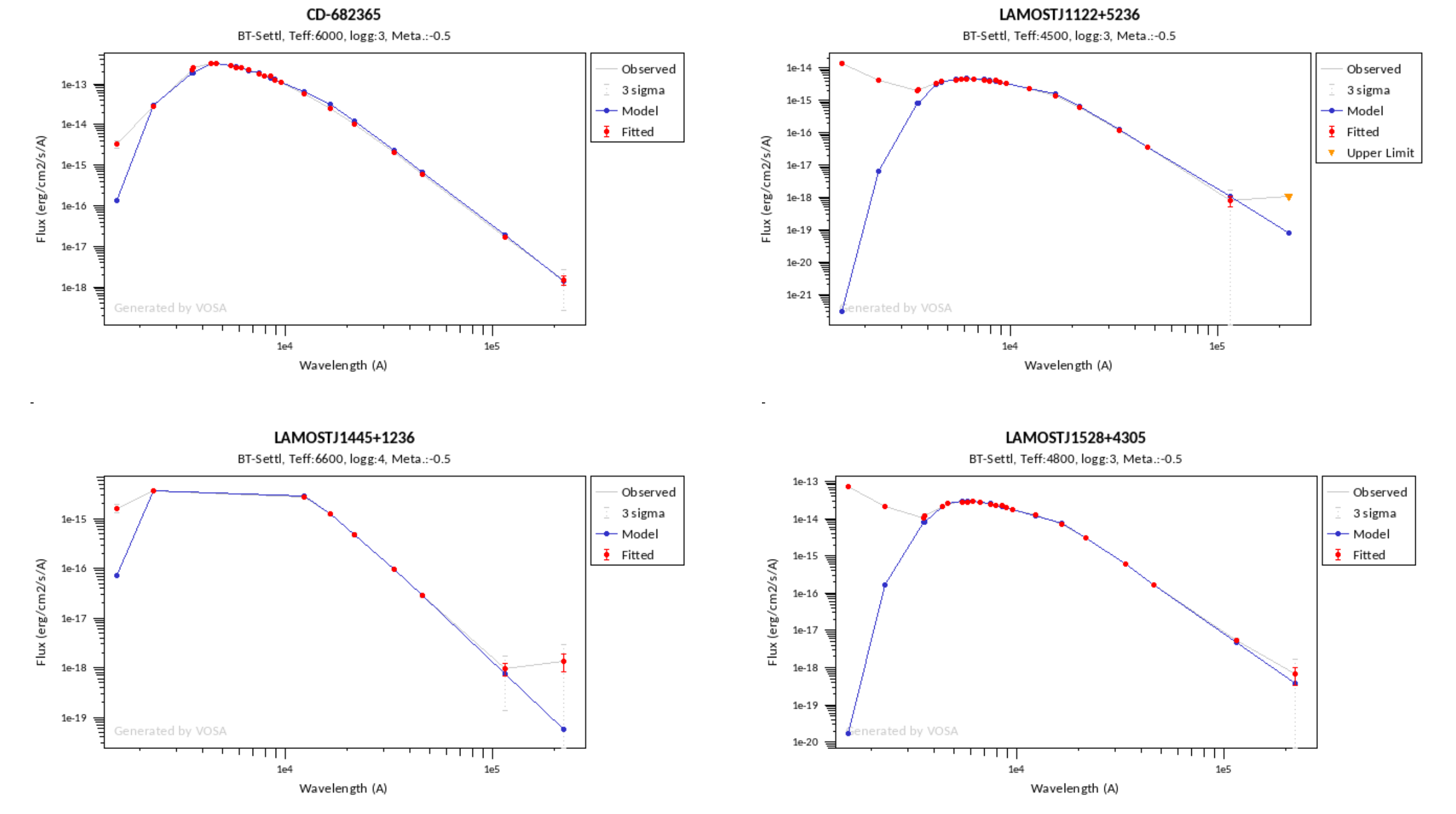
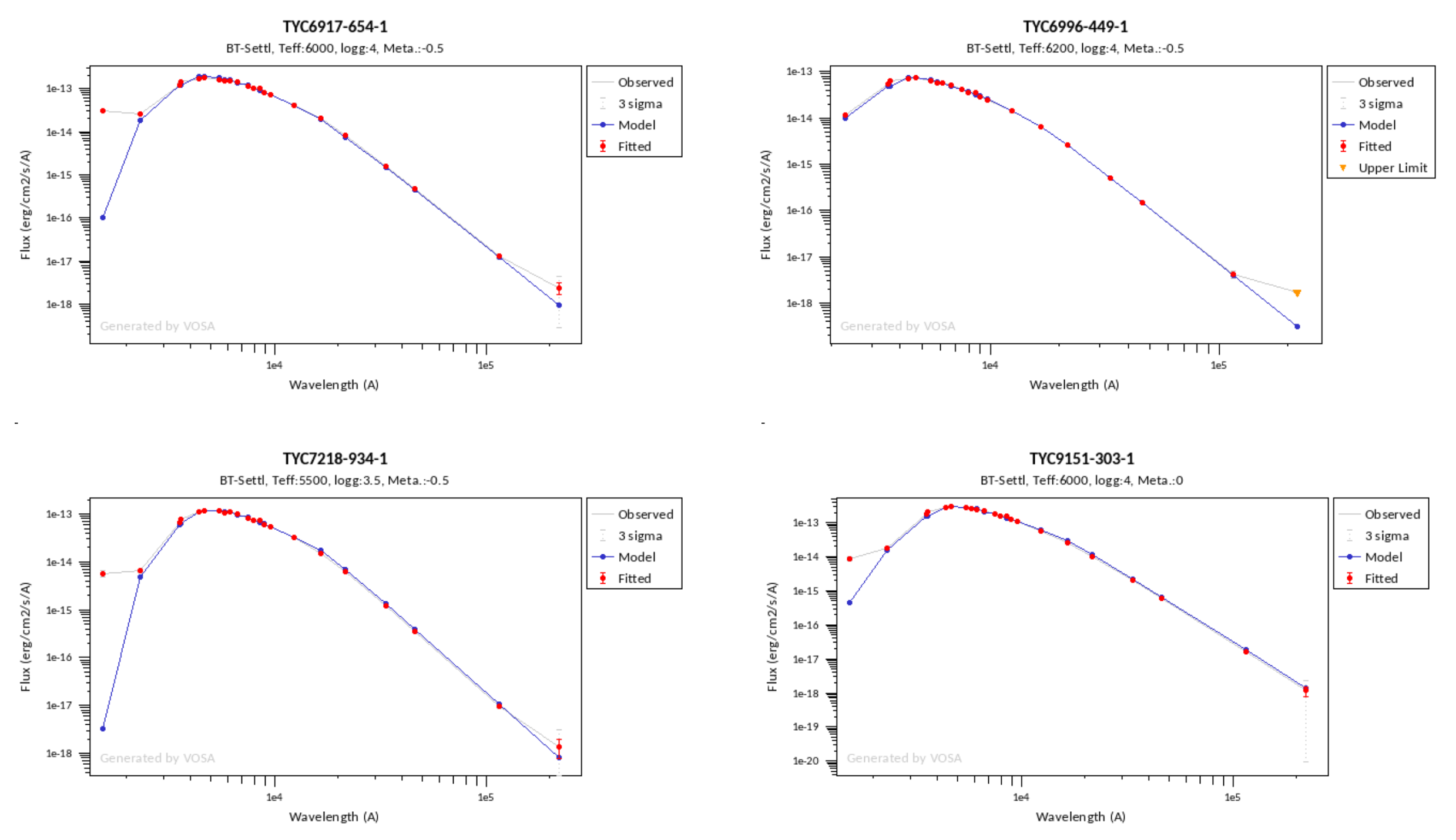
- Using Koester and BT-Settl model and the binary fit option, we see how the effective temperatures VOSA gives for the cooler component (the FGK main sequence star) using the single and binary fit are in good agreement (see below. Y axis in the histogram indicates the number of objects per bin).

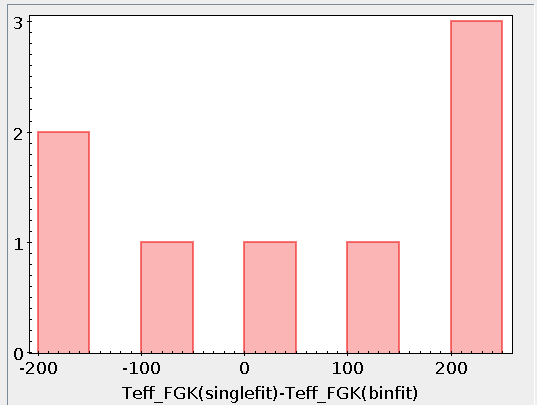
Also these values are consistent with those given in Parsons et al. for the FGK companions (see below, Y axis indicates the number of objects per bin). The two discrepant values correspond to the objects with the largest uncertainties in Teff in Parsons et al.
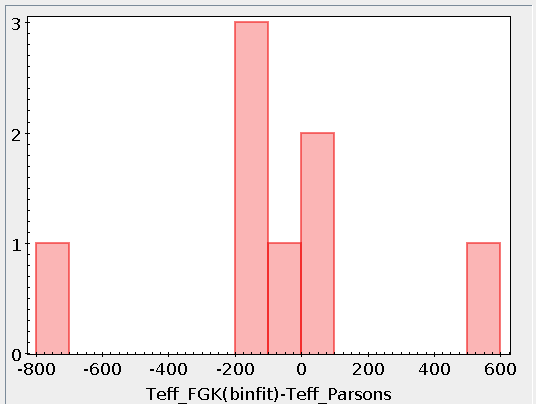
Larger uncertainties are, however, associated to the estimation of effective temperatures for the hot component (the white dwarf, see figure below, left). These uncertainties can be ascribed to the poor coverage of the UV region in the SED generated by VOSA, with just GALEX photometry in this range, while Parsons’ temperatures are estimated from HST spectra with a much better coverage in the ultraviolet (see figure below, right).
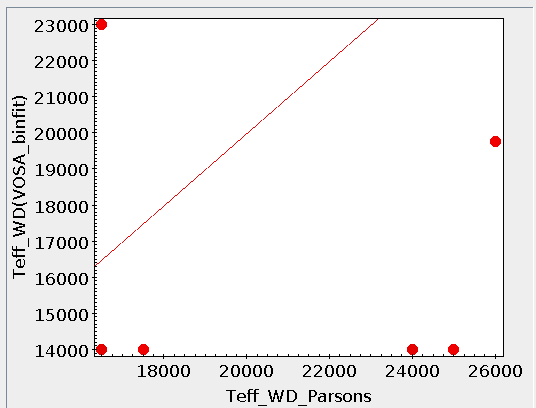
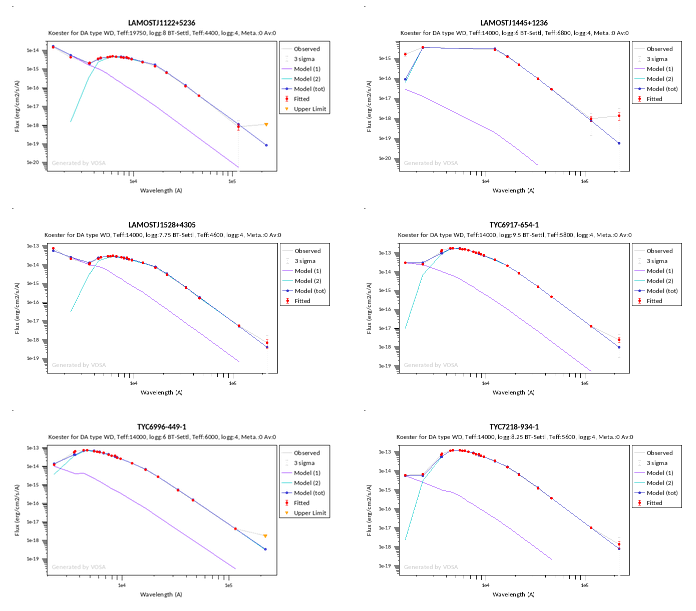
We can, thus, conclude that, for this type of binary systems, VOSA provides accurate determinations of effective temperatures for the cool component (the FGK main sequence star), it is also able to identify a flux excess indicating the presence of a second component but, even if the binary fits look OK, the effective temperatures for the hot components are affected by large uncertainties due to the poor photometric coverage in the ultraviolet of the SED generated by VOSA.
Binary fit use case #2
White dwarf + disk/brown dwarf
- We took 10 objects from Rebassa-Mansergas et al. 2019. Out of these 10 objects, there are three that have companions with temperatures typical of brown dwarfs and catalogued as L5-L6 (see references therein). The remaining seven objects show an infrared flux excess compatible with the presence of a disk.
- Using a single model fitting to Koester models, VOSA is able to identify a flux excess for eight of the objects (see an example of one of these objects in the figure given below)
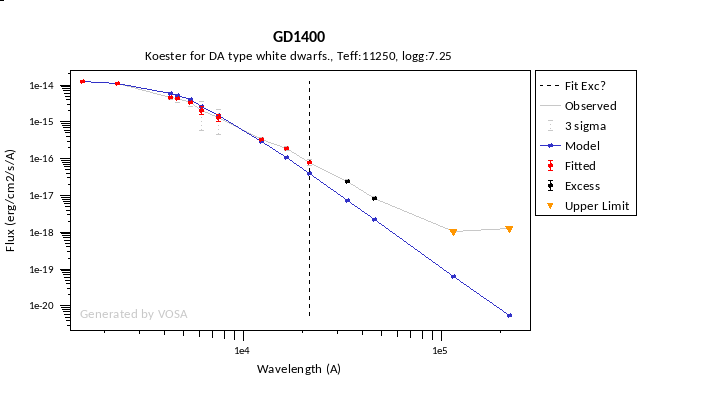
- The VOSA two-body model fitting (using Koester + blackbody or Koester + Bt-Settl CIFIST for disk or brown dwarf companions, respectively), clearly separates the disks (Teff<1200K) from the brown dwarf companions (Teff>1200K), although the effective temperatures given by VOSA for the brown dwarfs are higher than the values given in Rebassa-Mansergas et al. (see below. X-axis represents the effective temperatures computed with VOSA while Y-axis gives the temperatures from the references included in Rebassa-Mansergas et al.).
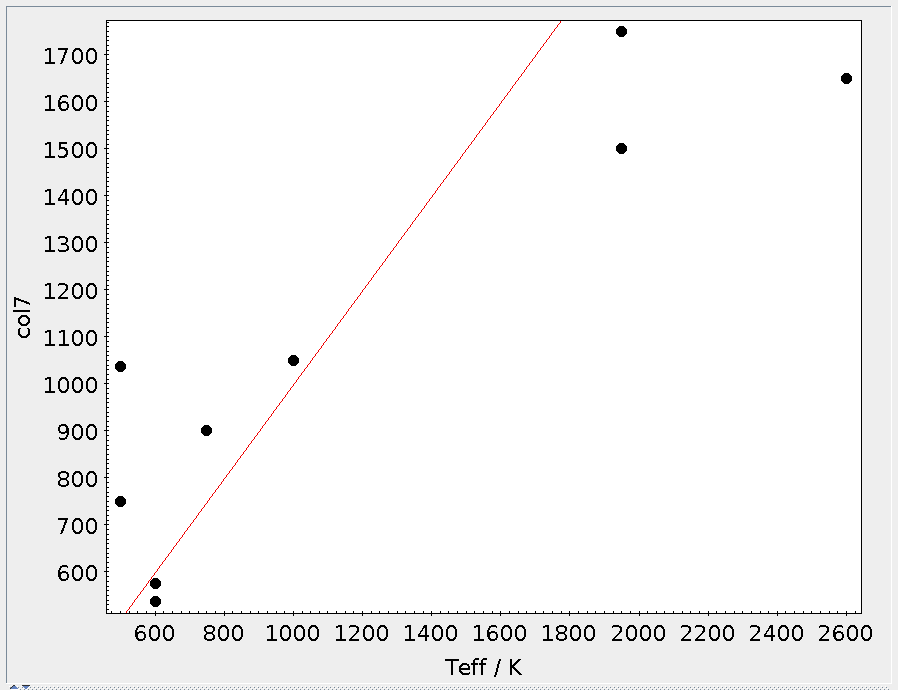
- For the primary components (white dwarfs) with Teff>20000K the VOSA values are systematically lower (see below) as it does not have access to photometry covering the peak of the SED (which would fall in the mid/far UV) .
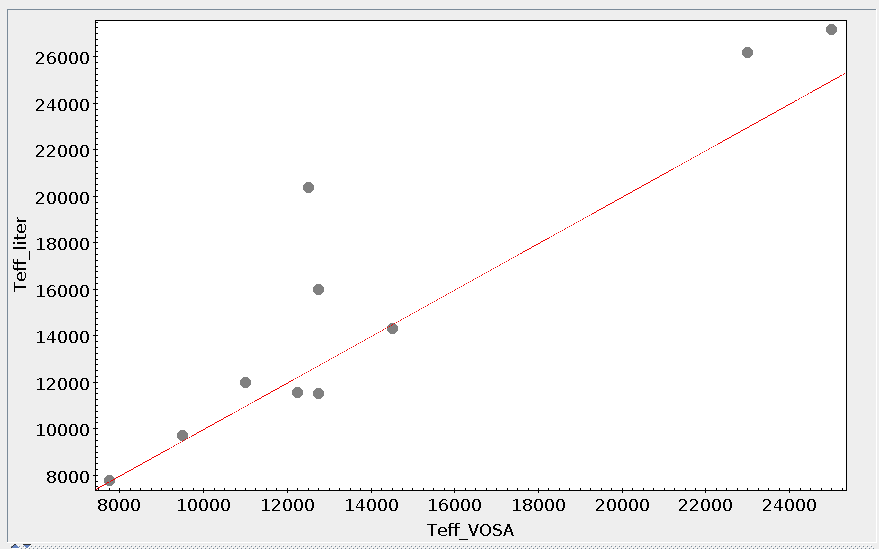
Binary fit use case #3
M dwarf + M dwarf
|

